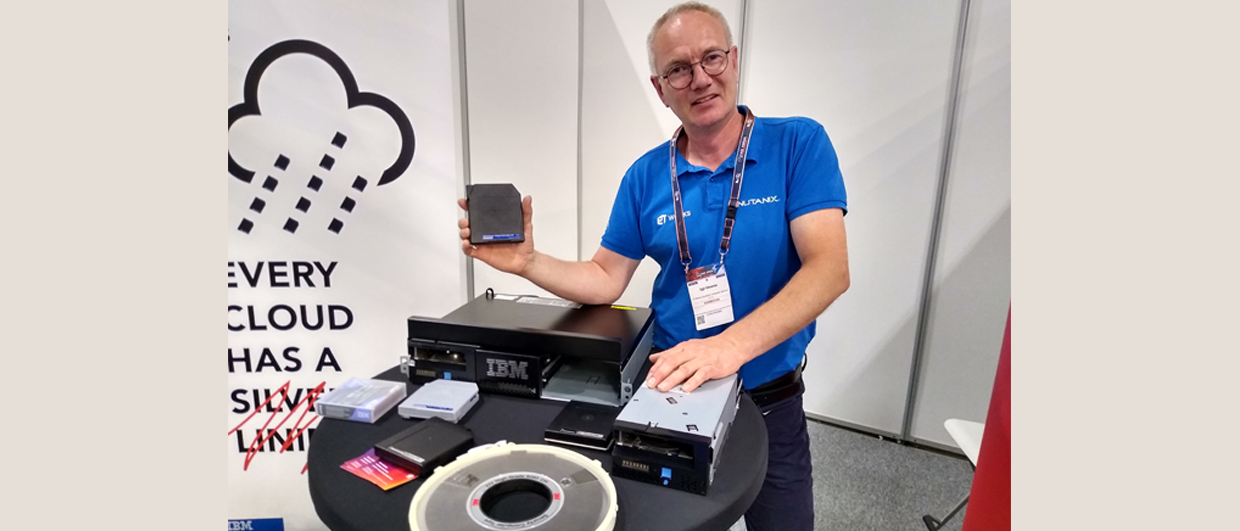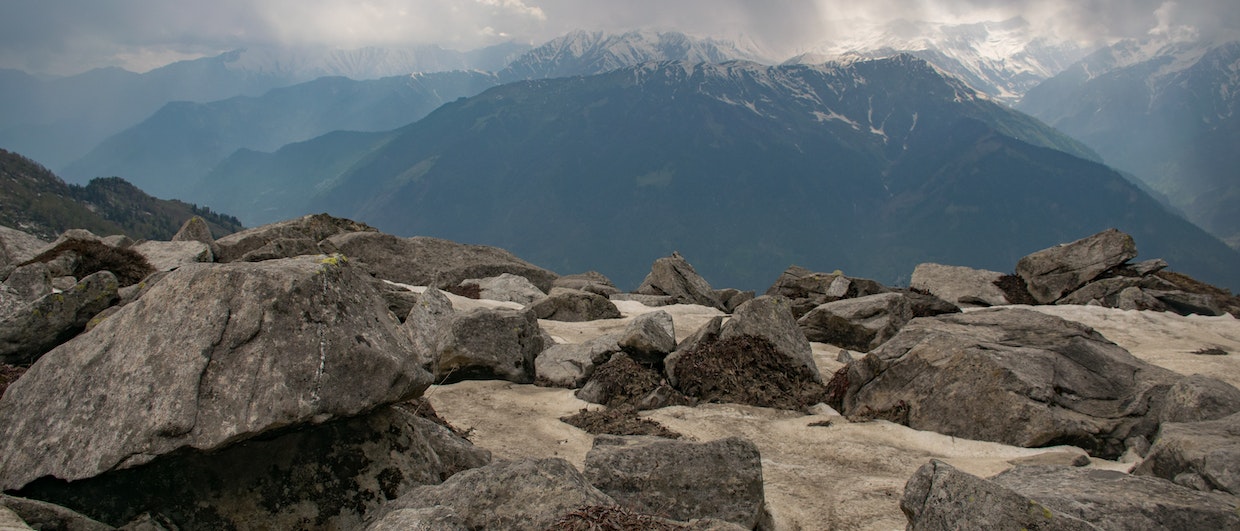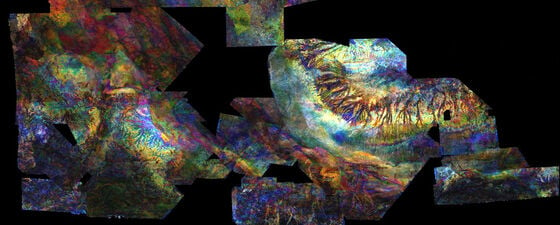The modern vibroseis is a complex, delicately tuned machine. The shaking gets translated into seismic data to provide insights into the subsurface for oil, gas and resource exploration.
An 80,000 lb vibroseis working in the desert. © INOVA Geophysical.
The process of defining a sweep, testing a vibroseis, and ultimately deciding on shooting parameters for seismic, is more complex than most people think.
Designing a vibroseis, building it, and keeping it working is just as complex. In this article we discuss the key pieces in these intricate processes: sweep design; the controller; mechanics and hydraulics; and important specifications.
Designing Sweep
Sweeps have three key characteristics:
a starting frequency,
an ending frequency
and a sweep rate.
A low dwell sweep, typical of the type utilised today. There is a slower sweep rate from 0–3.5 seconds in the lower frequencies followed by a transition to a linear portion from 3.5–9 seconds. The amplitude of the sweep in the low frequency portion is proportional to the limitations of the vibroseis. © INOVA Geophysical.
When a geophysicist designs a sweep, what they are really doing is telling the earth how they want it to respond. For this they need to find a balance between frequencies. Higher frequencies yield more seismic details, while lower frequencies tend to propagate further and improve the fidelity of the response.
Aside from the frequency range, the sweep rate is probably the most important feature. If it is too slow – something below 0.5 Hz/sec – the hydraulic system of the vibroseis struggles to reproduce the sweep; if it is too fast, the mechanical side of the machine simply cannot respond quickly enough, and will generate noise or limited force. Most of the sweeps in oil and gas exploration will begin at 1–2 Hz and end in the 85–90 Hz range, with a duration of 8–20 seconds. This is primarily because the earth simply will not respond, seismically speaking, to higher frequencies. Sweeping at frequencies lower than 2Hz can still be regarded as research. The length of the sweep, however, is guided by more practical forces: time and money. There are some regions of the world where higher frequencies are possible, but they tend to be less common.
Testing is a critical phase because the effectiveness of the vibroseis’ ability to reproduce the designed sweep is a complex interaction between the hydraulics and mechanics of the vibroseis and the portion of the near surface of the earth that is captured by the baseplate of the machine. The variability of the near surface can be daunting and every effort should be made to optimise the result. Nevertheless, testing factors such as sweep length and force settings create predictable results, so the time spent with this type of parameter testing is often not needed.
In recent years, sweeps have been adapted in an attempt to enhance low frequencies, and are referred to as low dwell sweeps. These frequencies are generally in the range where the vibroseis cannot sweep at full force due to limitations in the hydraulic system or the mechanics. The force output of this sweep is designed to match the performance profile of the particular vibroseis. This low dwell sweep has gained more attention due to its success at enhancing frequencies in the 1–5 Hz range in several regions.
The Vibroseis Brain
This diagram shows a schematic of the critical, mechanical, and hydraulic components of a vibroseis. The controller manages the full system with feedback from the accelerometers on the mass and baseplate. © INOVA Geophysical.
The task of the controller is to take the designed sweep and translate it into work for the vibroseis. It has been said that vibroseis technology does not get enough energy into the ground, but this often-repeated statement is fundamentally wrong. A basic idea of physics says that energy is the potential to do work. What people should really be saying is that the vibroseis is not doing enough work, because work is defined as the interaction of force and displacement. For this purpose the controller uses a sophisticated feedback loop to manage the pilot valve, a small hydraulic valve that is the first stage in the hydraulic system and is ultimately translated into bigger forces. The pilot valve controls the mainstage valve, which controls the main piston, and the main piston drives the mass. Feedback comes from accelerometers on the mass and the baseplate. The controller tells the vibroseis what to do, then measures its response and adapts the control in an attempt to match the vibroseis’ output to the sweep as closely as possible.
It is an imperfect machine, but the real measure of success is the consistency of the radiated sweep from one source point to another; consistency over variable ground means that the source signature is constant and predictable. This improves the final seismic result by eliminating spatial variables from processing and the final interpretation.
Controllers have also been enhanced in recent years to include features such as harmonic distortion reduction. Harmonic distortion is the noise that is always present when sweeping with a vibroseis that also steals some of the desirable radiated force from a sweep. If harmonics can be reduced, then the fundamental force of the vibroseis can be increased. The controller is the brain of the vibroseis but like the human brain, the body cannot always do what the brain says. Some of the sweeps that are proposed, such as random sweeps, simply cannot be reproduced mechanically in a reliable and consistent way.
Vibroseis Designers and Mechanics
Vibroseis experts come in two forms: the individuals that design vibroseis and the mechanics that build and maintain them. If you distil what a vibroseis does, it is really just an exercise in basic physics. The machine is designed to hold everything stationary, then oscillate a very heavy mass. Ideally, the oscillations will match the sweep profile. The hold-down weight of the vibroseis keeps the oscillating mass coupled to the ground so that the majority of the work performed is translated into radiated seismic waves. This work is accomplished through a surprisingly complex system of hydraulics and mechanics; this is where the real experts ply their trade.
Ideally, the hydraulic fluid will drive the mass up and down in a way that matches the designed sweep. While this sounds simple, the mass can weigh as much as 6,100 kg (13,448 lbs), so making it oscillate at over 100 cycles per second in a precise way is harder than it seems. Careful adjustments and calibrations are done to get the vibroseis to repeat oscillation reliably. The designers make certain that the physics is correct, while the mechanics build the units and keep them working correctly. A poorly maintained or adjusted vibroseis will generate a substantial amount of unnecessary noise, which will contaminate the result. In recent years, many improvements have been made to the vibroseis as a complete system, which have enhanced the performance of the unit when compared to those built in the late 1990s. Overall, maintenance and setup are still the major components to optimal performance.
Important Vibroseis Specifications
Low Frequency Performance: There have been many publications on this topic recently, but the critical factors to understand are the usable stroke of the vibroseis and the hydraulic flow rate. Some manufacturers publish the full force frequency, which provides an insight into the low frequency performance, but has limited value in predicting force output in the 1–4 Hz range of any vibroseis. A longer, usable stroke will result in a substantial increase in low frequency force. To date, the longest stroke production vibroseis available has a usable mass stroke of 17.78 cm (7”), while most older models are limited to about half that. With a long stroke, an 80,000 lb (~35,000 kg) vibroseis can produce only about 4,800 lbs (2,177 kg) of force at 1 Hz.
Theoretical force profiles for two different 80,000 lb vibroseis. The blue curve shows the dramatic improvement that is possible with design feature changes such as a longer stroke and greater hydraulic flow. © INOVA Geophysical.
Peak Force: This term is generally thought of as the hold-down weight of the vibrator. It makes sense that the vibrator cannot output more force than the total weight of the unit; however, a more accurate measure is related to the hydraulic pressure and area of the mass piston. The operating high pressure multiplied by the area of the piston head is equal to the actual maximum force the vibrator can exert. By design, this force is generally very close to the hold-down weight of the unit, but it is based on parameters that are often not specified in marketing material. The complexity increases with the need to subtract the low side pressure from the equation. Nothing related to vibroseis technology is as straightforward as it initially appears!
Frequency Range: Most manufacturers will publish the frequency range that the vibroseis is able to reproduce; the caveat here is the force. High frequency sweep generation is almost always limited to something less than the published maximum force of the vibroseis. With large 60,000–80,000 lb vibrators, the maximum frequency is generally in the 130–140 Hz range – above those frequencies the vibrator sweeps with less force and will also generate more noise. With smaller vibroseis (25,000– 35,000 lb), much higher frequencies (200–300 Hz) are possible, but often come with the same restrictions for lower force output.
There are other specifications that can be important and could impact operations and other detailed aspects of the vibroseis, but the ones discussed here are generally the most critical for geophysical considerations.
Vibroseis: A Complex and Precise Instrument
Vibroseis has become the common source for seismic data collection globally. Many improvements have taken place in recent years to make it a better, more consistent seismic source in all types of terrains. Understanding that the vibroseis is a highly complex and precise instrument, rather than just a large, brute force machine, is a key to its long-term success.





